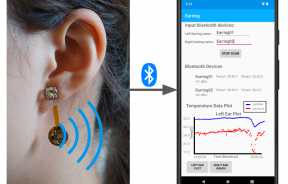1-Year Contraceptive Vaginal Ring Proven Effective In Phase 3 Trial: Well-Received By Women And Their Partners

There are several methods and devices for birth control to reduce the risk of unintended pregnancies. According to Planned Parenthood, the most effective method of contraception is abstinence, followed by condoms and birth control in the form of the pill, patch, or ring. Ninety-two out of 100 women who use the pill, patch, or ring will be protected from becoming pregnant with typical use. These birth control methods are highly effective but usually require daily, weekly, or monthly administration. A one-year contraceptive vaginal ring (CVR) that is a user-controlled method was found to be effectively reusable in a Phase 3 clinical trial.
The 13-cycle, or one-year, CVR is roughly 2.25 inches in diameter, soft and flexible, and easily inserted into the vagina by the woman herself. Once the ring is in place, it prevents ovulation by repeatedly releasing a low dose of hormones through the vaginal walls and then into the blood stream, according to the Population Council, the research company that conducted the trial.
The Phase 3 trial was conducted with more than 2,000 women across 27 study sites worldwide. These women were divided into two study groups: study 300B evaluated the efficacy, safety, and acceptability of the CVR; study CCN006/300A evaluated the efficacy and safety. In study 300B, there were more than 1,100 healthy, normally ovulating women across 12 study sites in Australia, Europe, Latin America, and the United States. The results of the 300B and CCN006/300A suggest that the CVR is as effective as other combined hormonal contraceptives in preventing pregnancy when used properly.
The effectiveness of the one-year ring owes to thinyl estradiol (EE), an approved marketed hormonal product, and Nestorone (NES), an investigational new chemical entity, according to the study. NES is a strong form of progesterone that is only effective in non-oral routes such as vaginal rings, implants, and transdermal system. The EE/NES ring allows for the release of hormones without the need for daily application to achieve effectiveness and maintain regular menstrual cycles in women.
The researchers note that the amount of steroids administered over 21 days is lower compared to the level of steroids that a woman’s liver is exposed to through daily oral administration of hormones, such as the pill.
The acceptance of the CVR was also evaluated among the women in the 300B group. These women were highly satisfied with the ring, found it easy to use, and indicated that they would recommend it to other women. The ring was also found to be well-accepted by the women’s sexual partners, according to Medical Xpress.
"These results add to the growing body of evidence supporting the use of the Council's investigational one-year contraceptive vaginal ring," Ruth Merkatz, Ph.D., director of clinical development for the Population Council's Reproductive Health Program, said in a press release.
The ring will offer a unique contraceptive option that is effective for one full year under the woman’s control. The CVR does not require insertion by a health care professional.



























